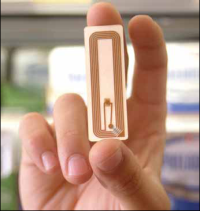Airwaves super vehicles deployed
Reliable communications has been identified as one of the shortfalls during the London bombings. Emergency workers when underground are particularly at risk in this area. Installing a completely new communications infrastructure into the London Underground would be a huge investment and present a massive technical challenge.

Reliable communications has been identified as one of the shortfalls during the London bombings. Emergency workers when underground are particularly at risk in this area. Installing a completely new communications infrastructure into the London Underground would be a huge investment and present a massive technical challenge.
In response to the need for better underground communications, 02 Airwave have unveiled a fleet of specially designed Emergency Response Vehicles (ERVs) that are now on permanent standby, ready to be deployed if any serious incident occurs.
The plans for the new system began in 2004 after the Madrid bombings. The system uses the existing City Link which is a project that London Underground is developing. On top of this is the communications network called Connect. The practical upshot will be that emergency workers when underground will have access to their normal Tetra radios.
The ERVs provide their communications system wirelessly via what is called a leaky feeder cable. An antenna is placed at street level which has access to the Tetra network. The Tetra signal is then passed to a repeater and then moved underground via the leaky feeder cable. Any officer that is underground can use their standard radio handsets to contact their control rooms on the surface.
Richard Bobbett, Chief Operations Officer at Airwaves outlined the ERVs deployment during the London bombings: We went into the deep level tunnels at Russell Square and Kings Cross on the 8th July with deployments. After that we put together all of the equipment into three vehicles. Each vehicle has its own power supply and a pump up mast so we can reach the Airwaves signal no matter where the ERV is located. The vehicles are available on a 24 hour basis and also have their own engineers permanently on duty. They are really designed just like any other emergency response vehicle.




